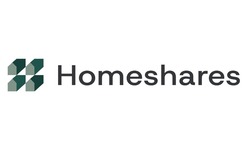Now, individual investors are also able to participate in the rising value of U.S. home equity. There’s a new asset class available to accredited investors with $25,000 or more to invest, designed to maximize upside potential while limiting downside risk.
Major institutions have been investing billions of dollars into the home equity market for years, including companies like Barclays, Carlyle Group, Numora, and KKR. DBRS Morningstar and KBRA have even issued ratings for securitizations tied to this market.
Now, individual accredited investors can access the same asset class as these Wall Street giants through the U.S. Home Equity Fund from Homeshares.
How home equity as an asset class works
Major institutions and individual investors are able to tap into the home equity market through a structured product known as a home equity agreement (HEA). These agreements provide investors with a share of a home’s future appreciation in exchange for a lump-sum payment made to the homeowner.
The benefit to investors? These are responsible homeowners interested in the upkeep of their homes. In addition, investing in owner-occupied homes through HEAs offers accelerated appreciation and downside protection because the agreements are originated with a built-in value adjustment.
This value adjustment puts investors “in the money” from day one, which not only adds to the potential upside but protects their investment even in the case of a significant market downturn.
HEAs are structured as real estate option contracts secured by a lien on the home. This approach allows investors to benefit from home price appreciation at an amplified rate relative to their initial investment without the risks and responsibilities of property ownership.
It also offers benefits to the homeowners who make up an HEA fund. Homeowners enter a home equity agreement that allows them to access liquidity without incurring interest payments. This allows them to access cash up to a capped percentage of home value while still retaining full ownership and residency rights. Unlike loans, HEAs require no interest payments, making them an attractive alternative to home equity loans (HELOCs) or cash-out refinancing.
Why is the market growing?
The HEA market is in its early institutional adoption phase with significant growth potential, thanks to rising homeowner demand and shifting macroeconomic conditions. Home equity is one of the largest untapped sources of homeowner wealth — and home prices are continuing to rise.
What makes HEAs different from traditional home equity products? HELOCs and cash-out refinances tend to come with higher interest rates and stricter lending standards. HEAs, on the other hand, provide an alternative without adding debt burdens. At the same time, homeowners are increasingly seeking alternatives to access equity without monthly payments.
Investors can now leverage Homeshares to access record-high home equity through HEAs that provide liquidity without interest payments while offering downside protection and asset appreciation. Typically, this asset class is only available to institutional capital, but Homeshares is making its U.S. Home Equity Fund available to accredited investors with a minimum investment of $25,000.
About the U.S. Home Equity Fund
The U.S. Home Equity Fund provides investors with structured exposure to owner-occupied residential real estate through a diversified portfolio of HEAs. The fund is built for risk-adjusted growth, targeting 14% to 17% net IRR through enhanced home price appreciation without the responsibilities that come with direct property ownership. As an investor, you get paid through NAV appreciation (net asset value) and realized returns (payoffs of the HEAs).
The target IRR translates to a 2.1x MOIC, meaning a $100,000 investment has the potential to more than double over the course of the fund’s expected five-year term.
The fund is managed by Nada, an institutional-grade HEA originator with a track record in structured home equity investments. The Nada team currently manages multiple investment funds with 250+ home equity assets and has achieved an average 19.3% IRR through realized HEA investments.
So, if you’re an accredited investor seeking diversification beyond traditional stocks and bonds — or looking for downside protection in a volatile market — then you may want to consider a home equity agreement fund. It’s also an option for those wanting real estate exposure without direct property ownership or for early adopters looking to get into a rapidly growing investment category that has historically been limited to institutional investors.
The U.S. HEF Fund is available to investors on Nada’s Homeshares.co investment platform.






